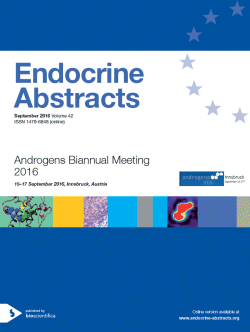Searchable abstracts of presentations at key conferences in endocrinology
Contents
- Androgens Biannual Meeting 2016
- Oral Communications
- Poster Presentations
-
- (1)
-
-
ea0042p37
-
ea0042p38




